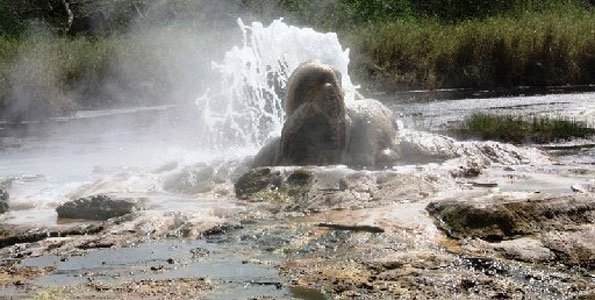Sempaya hot springs are found in Bwamba County, a remote part of Bundibugyo district. They are a huge attraction in Uganda and are commonly referred to as Semuliki hot springs. These hot springs are located in two places. They are one of Semuliki national park’s attractions as the water ejects clouds of steam as far as 2 km, and they attract many species of birds, aquatic animals, butterflies and primates, although the animals can’t survive for long.
The word Sempaya is derived from the Swahili word ‘sehemu mbaya’ which means ‘bad part’. The springs were called ‘sehemu mbaya’ because of the difficult construction of the Fort portal-Bundibugyo road; it was not easy to break through the ridges and rocks of mount Rwenzori.
You can enjoy a delightful and informative walk, which takes about 4 hours and learn about the rich cultural history of the indigenous Bamaga clan, who hold the sites sacred. It’s believed that the two hot springs each have different roles, one being referred to as the female and the other the male. The female is Nyasimbe and the male is Bitente. The locals say Bitente was the husband to Nyasimbe.
According to Bamaga folklore, local women spotted an unknown man with a spear and a dog in the forest. The men of the village took the man home and he married one of the women. But one day, he failed to return from hunting. All that was found was his spear, next to what is now known as the ‘male’ hot spring. When his wife discovered he had disappeared, she rushed to the site. She also disappeared, next to what subsequently became known as the ‘female’ hot spring. Bamaga believe their male and female ancestors dwell beneath each of the hot springs. They perform traditional rituals at the site every year to appease and honour them. Sempaya hot springs steam water gets out of the ground boiling at 103 celsius. This unique feature at Semuliki national park vegetation is said to have different roles.
The female hot spring is believed to have healing powers and many locals flock to the springs looking for healing, while the locals perform rituals annually at Bitente for blessings. In addition, they throw coins in the water and also make sacrifices. However, this does not stop visitors from partaking in the attraction.












